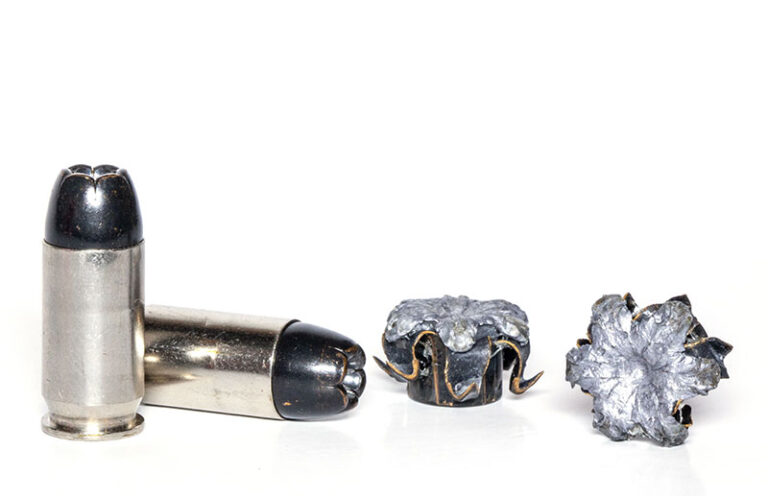
The short life and long legacy of Winchester’s Black Talon hollow-point ammunition.
Gian Luigi Ferri, a real estate speculator from Los Angeles, California, was 55 years old when he walked into the law firm of Pettit & Martin. It was July 1, 1993, and the 48-story high-rise was located on 101 California Street in San Francisco. Armed with three handguns and a lot of ammunition, Ferri wasn’t there to seek legal advice.
Moments later, he’d killed eight people, and more than a hundred police officers had surrounded the building. Ferri, however, would not be taken into custody; he committed suicide. His heinous attack would have serious impact on the firearms industry.
Prior to that, on April 2, 1991, the Olin Corporation (Winchester) applied for a patent—U.S. patent #US5101732 was awarded on April 7, 1992—and the resulting Black Talon bullet and ammunition made a big splash.1 Originally marketed as the Supreme Expansion Talon (SXT), the Black Talon bullet was unique. It marked the first defensive handgun bullet where the jacket was intentionally designed to increase wounding. Up until then, when a JHP handgun bullet deformed, the bullet’s soft lead core tended to mushroom back over the jacket as it peeled away. The Talon was different, as it deformed the razor-sharp petals of the jacket peeled back but also extended out past the mushrooming center core.
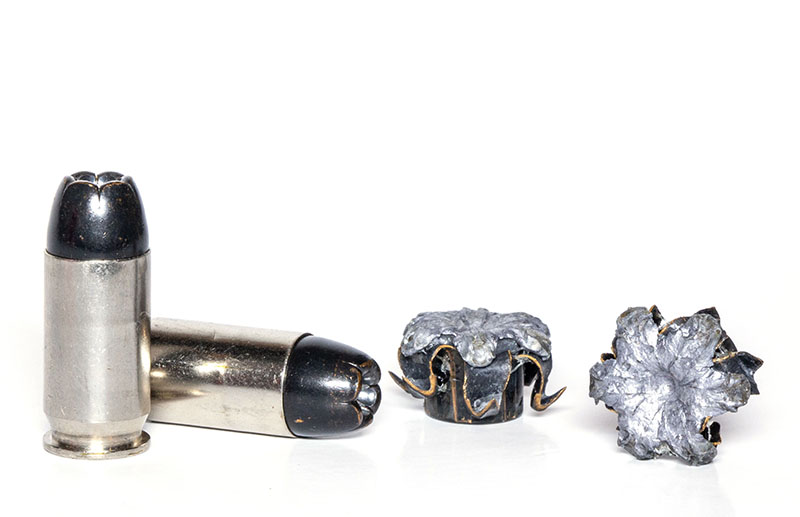
Winchester’s David Schluckebier was the inventor of the Talon bullet, and part of the key to its performance was its reverse tapered jacket made of a special alloy that was selectively annealed. The jacket material was of a higher percentage of copper than traditional bullet jackets, which made it softer and more ductile. This, in conjunction with expertly placed serrations, allowed the jacket to peel away—fold back—reliably and repeatedly, and with very sharp edges and multiple talon-like points.
Also, up until then, most JHP handgun bullets had a solid base, and the bullet’s jacket thinned toward the bullet’s nose. This is what allowed them to expand/deform reliably. For the Talon, Winchester needed jacket thickness at the nose of the bullet to keep the petals connected and to keep them from peeling back too far. The reverse taper jacket helped with this; the Talon bullet was formed upside down with the exposed lead alloy core visible at the bottom of the bullet.
Then, the final operation in the formation of the bullet came from the insertion of a special punch that created the hollow-point cavity and pre-stressed or serrated the nose of the jacket so it would peel away. Finally, the bullet was given a black Lubalox coating to reduce fouling, but this blackness also enhanced the Talon’s unfired, foreboding appearance.
The thought—and very likely the truth—with the Talon bullet was that these pointy extensions of the jacket slightly increased wounding through the cutting action they performed. Winchester’s advertisements for Black Talon ammunition were convincing, and the menacing look of the upset Talon bullets were intimidating. Though there’s no definitive evidence that Talon bullets were any better at stopping bad guys, looking at the bullet left you with an intense aversion to being shot with one.
It was all a good thing for Winchester; the Black Talon line of ammunition was popularly reported on in the gun press and it sold very well. Unfortunately, Ferri—remember him—bought some Black Talon ammo and loaded it in the magazines of his 9mm pistols on the morning of July 1, 1993.
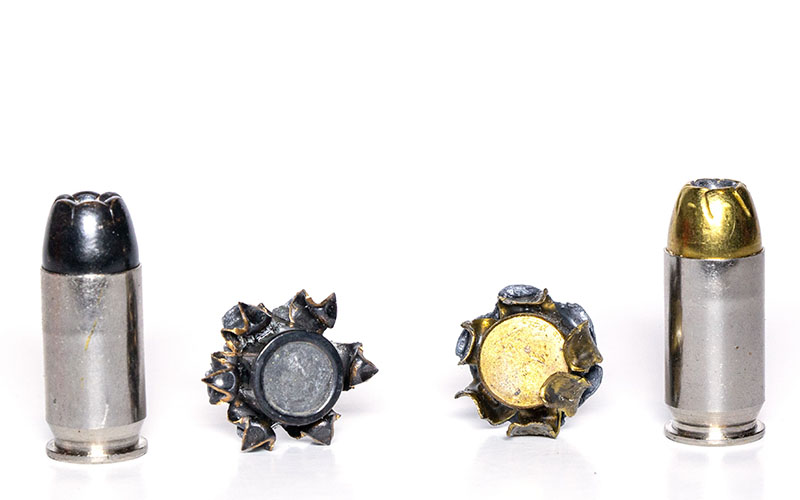
Stop The Presses!
In the aftermath of Ferri’s shooting, the media found the smoking gun they needed to sensationalize the story. The Talon bullet was vilified. Its modern design, combined with its ominous unfired appearance and wicked-looking deformed shape, made the media’s job easy. Reports that it would cut through a human body like a buzzsaw were common. The day before a Dateline special, in which Congressman Daniel Moynihan claimed the bullet was designed to “rip your guts out,” Winchester ceased the sale of Black Talon ammunition to the public. Their actions quite possibly prevented a new federal tax on hollow-point-style ammunition.
Though some now claim Black Talon ammo was banned or was made illegal, that was not the case. Winchester Black Talon ammo simply—under the new name of Ranger SXT—became a law enforcement-only option. But that’s not the end of the story. Schluckebier left Winchester and went to work for Remington, where in 1994 U.S. patent #US5357866 was issued for what would become Remington’s flagship defensive handgun bullet.
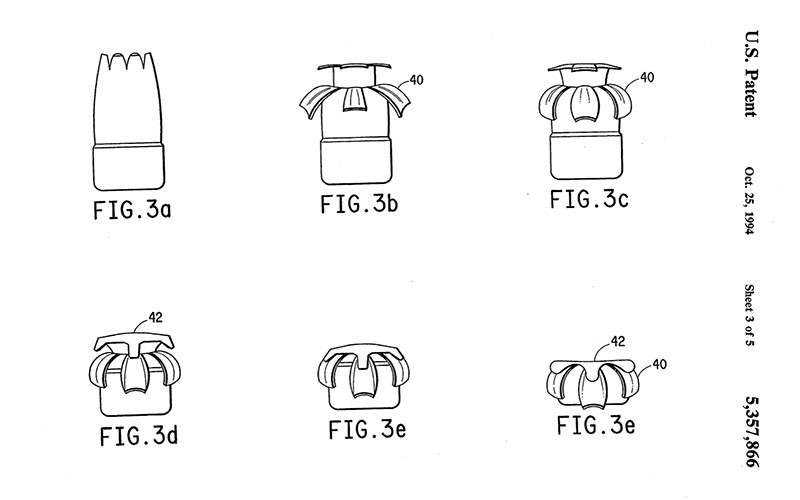
Schluckebier engineered the Golden Saber bullet similarly to the Talon. The difference was that the Golden Saber had a jacket made of cartridge brass—70 percent copper and 30 percent zinc—and was not of a reverse design. It had a caliber-diameter driving band at the rear because, with the tougher jacket material, only a small portion of the bullet needed to be of bore diameter. But it also worked like the Talon by using the deformed jacket to increase wounding; it just lacked the sharp talon-like points, the black color and the nefarious name.
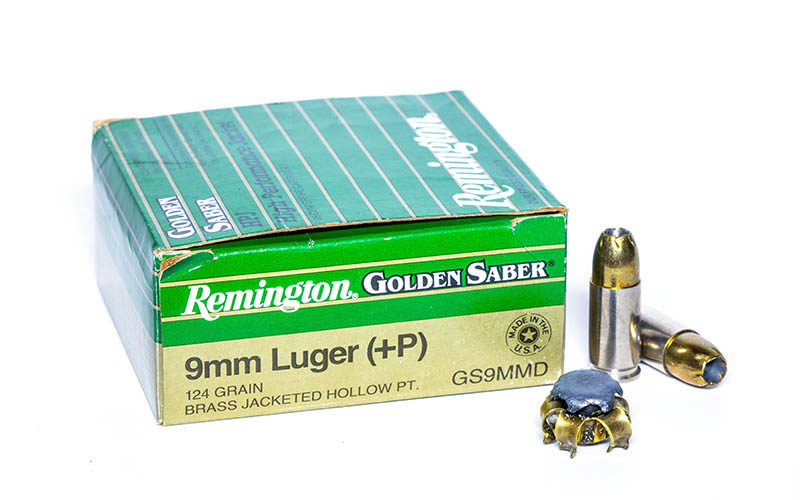
The Golden Saber bullet and its later bonded version have become highly trusted JHP bullets for self-defense and law enforcement use. They perform very well, even after passing through intermediate barriers, and their unique design that allows the bullet jacket to enhance wounding helps the bullets mushroom with a wide frontal diameter, while still retaining weight for deep penetration. Many, including me, consider the 124-grain +P 9mm Luger Remington Golden Saber load one of the best defensive loads available for that cartridge.
Winchester’s Black Talon ammunition had a short—initially happy but ultimately unfortunate—life. It was only available for public purchase for less than two years. However, it forever changed the game as it relates to defensive handgun ammunition. Thirty years later, its legacy—or as you might say, its descendant—lives on.
1There’s some confusion as to when Black Talon ammunition was introduced by Winchester. It was either at the 1991 or 1992 SHOT Show. It was not covered in the Gun Digest Annual until 1993.
Editor's Note: This article originally appeared in the March 2023 issue of Gun Digest the Magazine.
More On Defensive Handgun Ammo:

Next Step: Get your FREE Printable Target Pack
Enhance your shooting precision with our 62 MOA Targets, perfect for rifles and handguns. Crafted in collaboration with Storm Tactical for accuracy and versatility.
Subscribe to the Gun Digest email newsletter and get your downloadable target pack sent straight to your inbox. Stay updated with the latest firearms info in the industry.

![Best Concealed Carry Guns In 2025 [Field Tested] Wilson Combat EDC X9S 1](https://gundigest.com/wp-content/uploads/Wilson-Combat-EDC-X9S-1-324x160.jpg)


![Best 9mm Carbine: Affordable PCCs [Tested] Ruger Carbine Shooting](https://gundigest.com/wp-content/uploads/Ruger-Carbine-Shooting-100x70.jpg)
![Best AR-15: Top Options Available Today [Field Tested] Harrington and Richardson PSA XM177E2 feature](https://gundigest.com/wp-content/uploads/Harrington-and-Richardson-PSA-XM177E2-feature-100x70.jpg)

The Black Talon is an extremely old and outdated bullet design. Over 30 years ago, the design was noteworthy and breakthrough. However, there are numerous designs from other manufacturers that will outperform what the Black Talon did in every way possible. I do not need to mention the numerous manufacturers who have come out with better designs and more devastating results than what the old Black Talon could have ever dreamed of achieving because everyone knows these ammunition types already. The only tragedy is Winchester never kept up with the evolution and enhancing the Black Talon – Ranger family of ammunition and folded like a wet sock to the liberal media.
“became a law-enforcement option only.” So… it’s ok for cops to shoot people’s guts out? Cops are allowed to add to the wound channel?
“That which is legal for the government but illegal for the citizenry is the definition of tyranny.” – Thomas Jefferson
Being in Gun Digest 1993 would certainly point to a 1992 introduction. The annual book always comes out several months ahead of the date on the cover. Additional evidence comes from the US Patent & Trademark Office; Olin filed its trademarks for the Black Talon name and logo in 1992. Also, the later advertisements for the Black Talon rifle rounds mentioned that the handgun rounds were introduced in 1992.
this is cool thing